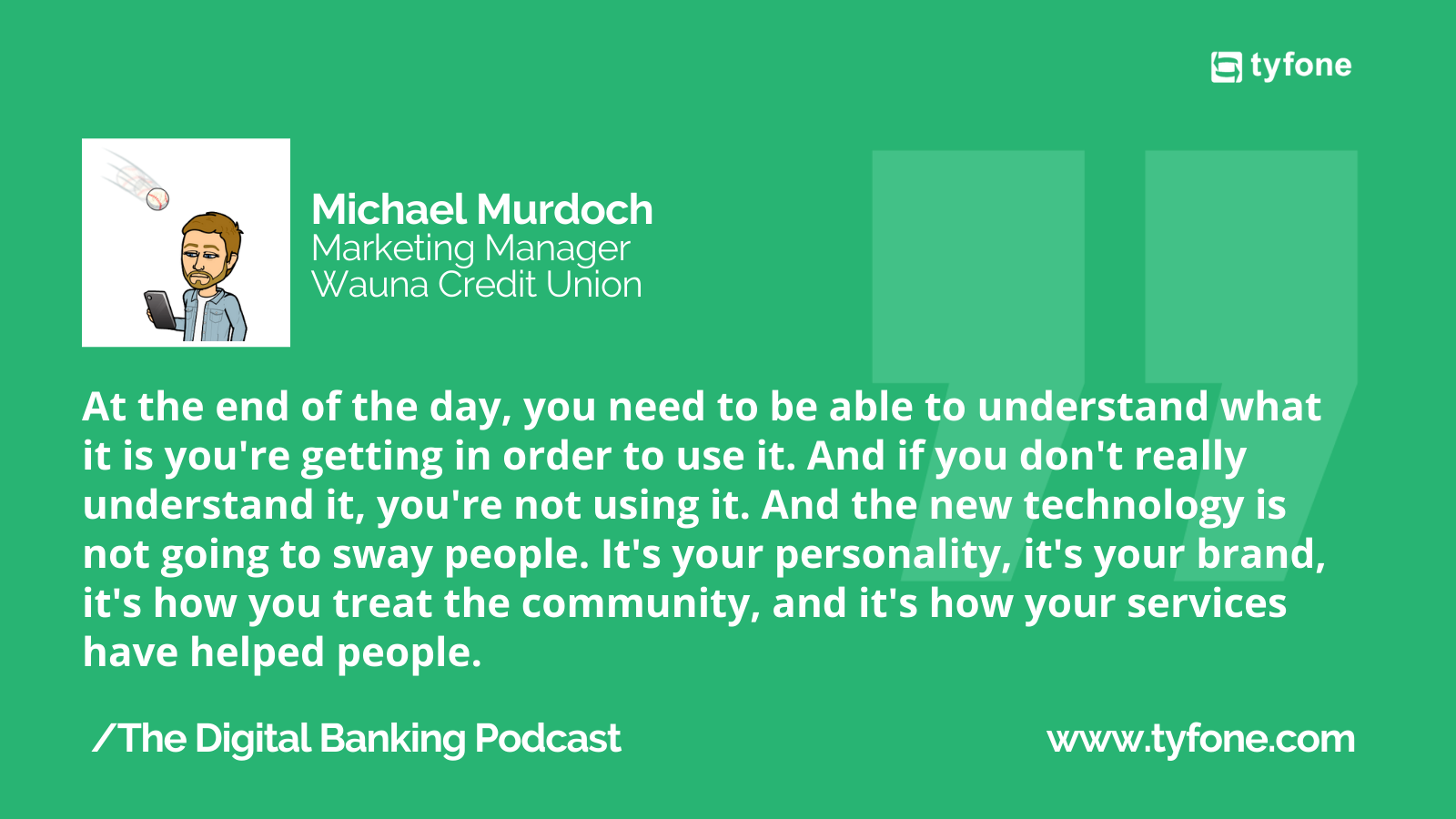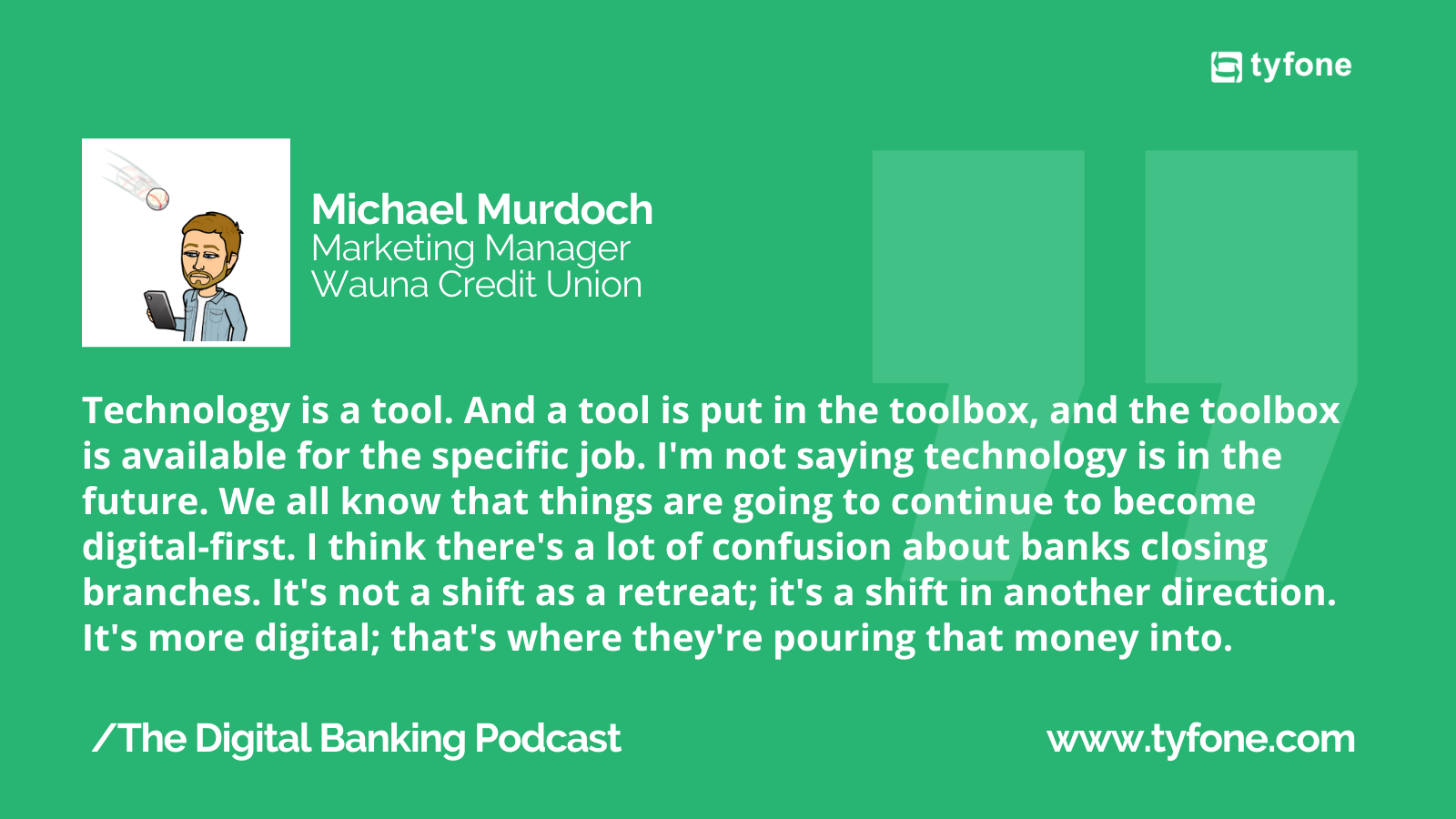Balancing Technology, Data, Diversity and Growth — Michael Murdoch of Wauna Credit Union
October 13, 2022
- Many credit union marketers have become obsessed with younger demographics. Is that because of the potential millennials have or just because of the financial impact they can have?
- Credit unions sometimes forget that they are not for profit, but for service. This distraction from their core mission, which is helping people, leads them of focus too much on generating revenue and creating growth for growth’s sake.
- Both credit union executives and rank-and-file employees should be a part of the decision-making process. By joining forces, they can deliver better solutions for their customers’ problems and show the younger members that they value their opinion.
Michael Murdoch is the marketing manager at Wauna Credit Union, a full-service financial cooperative that serves anyone near Astoria, Oregon. Michael strongly believes that credit unions, regardless of their size, should stand by their principal mission, which is helping people.
“A lot of the time, we lose sight of one of the original phrases of this movement, which is, ‘not for profit, but for service.’ We’re not for profit, which means we’re not trying to make money off of people. We do have to keep the lights on, and the more we grow, the more people we can help,” says Murdoch.
If you want to learn more about what Shaun and host Josh DeTar discussed, keep on reading or tune in to the new episode of the Digital Banking Podcast.

Does the struggle of capturing younger demographics really exist, or are marketers just obsessed with millennials?
At the very beginning of the episode, Murdoch referred to the “struggle of capturing younger demographics,” which has become a real problem in the credit union space.
“I don’t see it being a struggle for credit unions, although we’ve almost turned it into a struggle. At the end of the day, it’s about knowing who your communities are, who you are serving.” While it makes sense to focus on this audience, it’s important to consider why.
“Young people are making up more and more of the populace of this planet. Young people are making more and more money than other segments and other groups. They are coming up with new ideas. But, at the end of the day, if that’s the only thing that you’re seeing, I think you might be thinking of dollar signs and not of who you could be putting in the right places within your credit union,” explained Murdoch.

Millennials & technology: expectations and reality
Credit unions, like so many other organizations, use technology to attract more millennials. But tech is a double-edged sword. While new technology can certainly help credit unions reach the next level, technology for the sake of technology can distract an institution from its principal goal.
“Digital banking providers are often approached by somebody who wants a technology because they believe it’s going to target younger people. And when you start saying, ‘I want more millennials, and I want technology to do it,’ are you saying that because you want to grow and make money, or are you saying that because you want to grow and help people?”
Credit unions & diversity: the art of asking the right questions
“Are organizations just hiring folks because they are bilingual, or are they hiring because those folks represent a segment? And just because you speak Spanish doesn’t mean that you come from Mexico. There are 33+ countries south of the border, and they’re all different countries,” explained Murdoch.
At the end of the day, it’s essential to observe people as individuals, not as a “flock of sheep.” That way, credit unions can achieve real diversity as a part of their progress and growth.
“We serve individual people with different beliefs, different ideas, and different thoughts. You need a magic potion to be able to take everybody’s ideas, thoughts, and opinions into account. You just can’t do it, but you can ask questions to steer you in the right direction. At the end of it all, at least, you’re sailing toward the correct horizon,” suggested Murdoch.
How do we show younger members that we’re listening to them? by making them part of important decision-making processes
Murdoch strongly believes that credit unions should involve all their employees, especially the front line, in vital decision-making processes. However, letting employees sit in a board meeting or participate in conversations is often considered a huge “no-no.”
“Start with one person. Bring them to ALCO (Asset and Liability Management Committee), show them how that works. Let them sit in a board meeting. Let them see that process. I’m not trying to say that CEO listening tours are wrong or employee surveys are wrong. I’m just saying that there are certain ways that we can better show our younger communities that we’re listening to them, that we see them, and that we hear them,” suggested Murdoch.
If your staff brings problems, they should bring potential solutions as well
While modern leadership advice suggests listening to the team members and responding to their requests and concerns accordingly, Murdoch uses a slightly different approach.
“If you’re going to bring a problem, bring a potential solution with it, or tell me where you think the problem is originating so that we can take a better look at it,” explained Murdoch. He noted that a problem without a solution is just a complaint.






